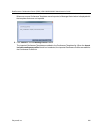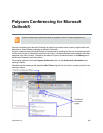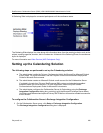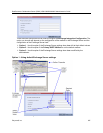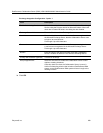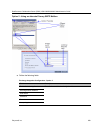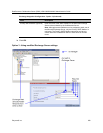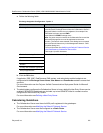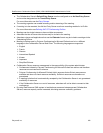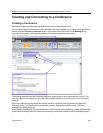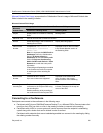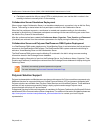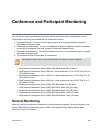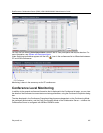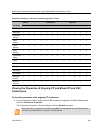
RealPresence Collaboration Server (RMX) 1500/1800/2000/4000 Administrator’s Guide
Polycom®, Inc. 392
● The Collaboration Server’s Default Entry Queue must be configured as an Ad Hoc Entry Queue
and must be designated as the Transit Entry Queue.
For more information see the Entry Queues.
● The meeting organizer can enable recording and/or streaming of the meeting.
● If meeting is to be recorded, the Ad Hoc Entry Queue must have recording enabled in its Profile.
For more information see Defining AVC CP Conferencing Profiles.
● Meetings can be single instance or have multiple occurrences.
● Attendees that do not have video devices may be invited to the meeting.
● Attendees using e-mail applications that use the iCalendar format may be invited to meetings via the
Calendaring Service.
● Meeting invitations sent by Polycom Conferencing for Microsoft Outlook can be in a different
language to the Collaboration Server Web Client. The following languages are supported:
English
French
German
International Spanish
Korean
Japanese
Simplified Chinese
● Collaboration Server resource management is the responsibility of the system administrator:
Conferences initiated by Polycom Conferencing for Microsoft Outlook are ad hoc and therefore
resources are not reserved in advance.
Polycom Conferencing for Microsoft Outlook Add-in assumes that sufficient resources are
available and does not check resource availability. Sufficient resources are therefore not
guaranteed.
A meeting invitation that is automatically accepted by the Collaboration Server is not guaranteed
availability of resources.
If the Collaboration Server runs out of resources, attendees will not be able to connect to their
conferences.
● By using RealPresence DMA system to load-balance resources between several Collaboration
Servers, resource capacity can be increased, alleviating resource availability problems.



